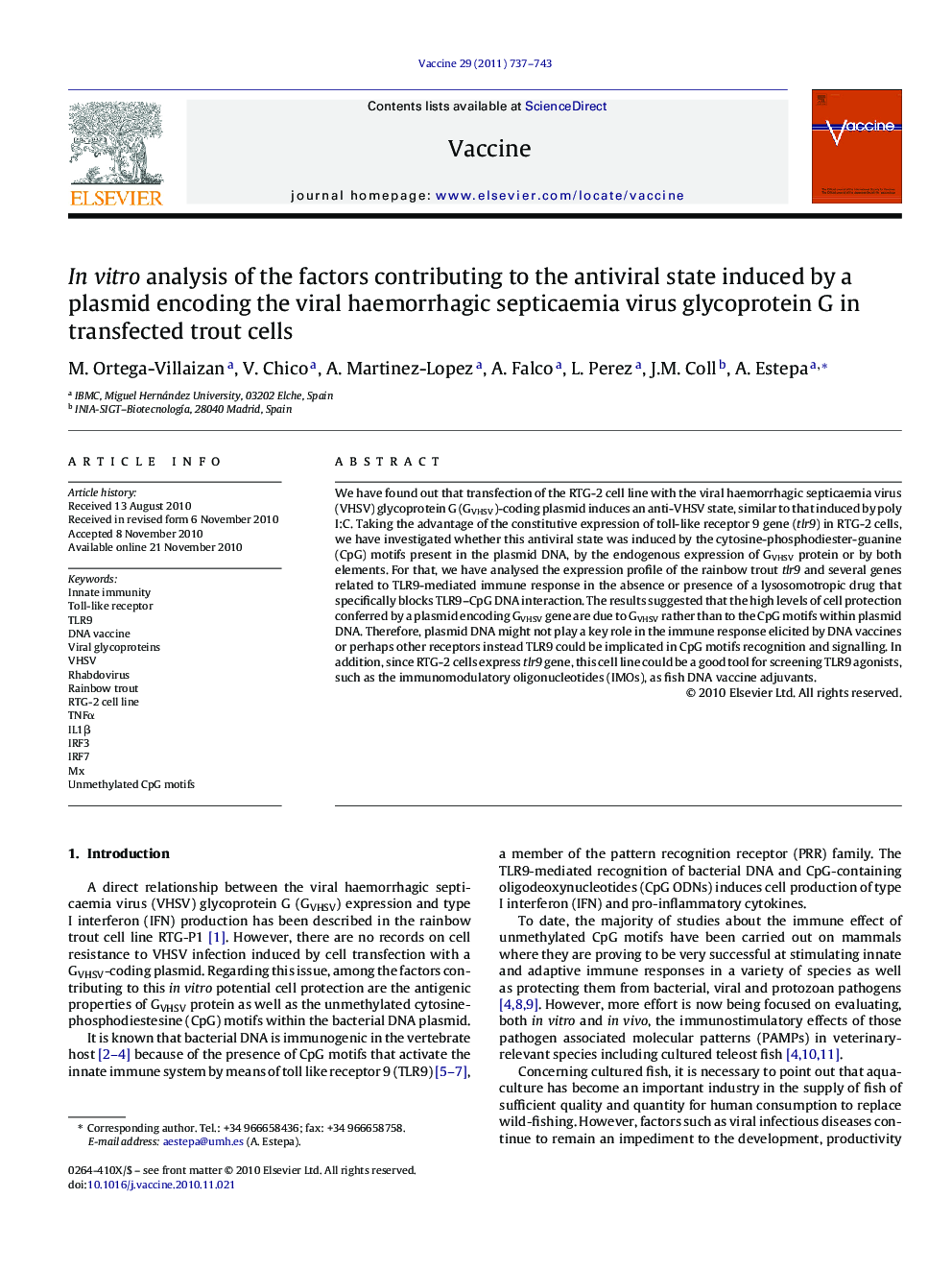| Article ID | Journal | Published Year | Pages | File Type |
|---|---|---|---|---|
| 10969190 | Vaccine | 2011 | 7 Pages |
Abstract
We have found out that transfection of the RTG-2 cell line with the viral haemorrhagic septicaemia virus (VHSV) glycoprotein G (GVHSV)-coding plasmid induces an anti-VHSV state, similar to that induced by poly I:C. Taking the advantage of the constitutive expression of toll-like receptor 9 gene (tlr9) in RTG-2 cells, we have investigated whether this antiviral state was induced by the cytosine-phosphodiester-guanine (CpG) motifs present in the plasmid DNA, by the endogenous expression of GVHSV protein or by both elements. For that, we have analysed the expression profile of the rainbow trout tlr9 and several genes related to TLR9-mediated immune response in the absence or presence of a lysosomotropic drug that specifically blocks TLR9-CpG DNA interaction. The results suggested that the high levels of cell protection conferred by a plasmid encoding GVHSV gene are due to GVHSV rather than to the CpG motifs within plasmid DNA. Therefore, plasmid DNA might not play a key role in the immune response elicited by DNA vaccines or perhaps other receptors instead TLR9 could be implicated in CpG motifs recognition and signalling. In addition, since RTG-2 cells express tlr9 gene, this cell line could be a good tool for screening TLR9 agonists, such as the immunomodulatory oligonucleotides (IMOs), as fish DNA vaccine adjuvants.
Keywords
Related Topics
Life Sciences
Immunology and Microbiology
Immunology
Authors
M. Ortega-Villaizan, V. Chico, A. Martinez-Lopez, A. Falco, L. Perez, J.M. Coll, A. Estepa,
